
Research Areas & Groups
Open Positions Class 2026 – Deadline for application already expired!
Please note that you need to have a completed Master’s degree or equivalent in a relevant field prior to starting the PhD program.
- Alim, Karen, Learning in Living Adaptive Networks
- Bohlen, Jonathan, Project in Molecular Biology Focusing on Regulated mRNA Translation, tRNA Biology, and Immune Regulation
- Frey, Erwin, Theoretical Biophysics of Protein Pattern Formation
- Jae, Lucas, Causes, Consequences and Correction of Mitochondrial Protein Misfolding
- Schwille, Petra, Project in Cellular and Molecular Biophysics tbd
- Milles, Lukas, De novo Protein Design & Experimental Protein Biophysics Characterization
Establishing close interactions among a group of researchers with very different backgrounds, expertise, and approaches requires some form of common intellectual focus and interest. Given the necessary and present methodological diversity within QMB, the focus is on one fundamental and encompassing biological problem – the control of gene expression in all its aspects, and the interplay of the different control mechanisms in regulatory networks.
The participating biochemists (Beckmann, Förstemann, Hopfner, Imhof, Jae, Jung, Klughammer, Ladurner, Stingele) study the molecular mechanisms of gene regulation in all its aspects, ranging from transcription to RNA transport and degradation, and from translation to protein folding, transport and degradation.
The biophysicists participating in QMB (Braun, Khmelinskaia, Rädler, Sabass, Schwille, Simmel, Stigler, Tinnefeld) bring a wealth of advanced expertise and novel methodologies, permitting the high-resolution quantitative and dynamic analysis of regulatory processes, including protein folding/conformation and the interaction of proteins with small molecules, nucleic acids, or other proteins in different settings (single molecule, purified/crude extracts).
The theoreticians in QMB (Alim, Frey, Gagneur, Gerland, Theis) bring the deep experience and expertise necessary to analyze and model the data produced by the experimentalists, encompassing the bioinformatic/statistical analysis of regulatory sequence and genomic data, as well as dynamical systems, network theory, and stochastic and thermodynamic modeling.
We also seek to translate concepts and methods of basic science into medicine. The biomedical-scientists (Hornung, Klughammer, Mages, Reichart, Wolf) are working on programming and differentiation in embryonic development, maturation of immune cells, the innate immune system and disease genetics.
 Karen Alim
Karen Alim

Karen Alim
Faculty of Physics, TUM
Biological Physics and Morphogenesis
Our goal is to identify the physical principles governing life and making them available to overcome disease and invent novel smart and robotic materials. Investigating an inherently interdisciplinary challenge spanning biological, statistical physics & mechanics, cell, developmental & synthetic biology as well regenerative medicine we focus on how flow and active, living matter feed back onto each other and thus control the architecture of vascular i.e., flow, networks and their surprisingly complex function. To reach our goal we employ an interplay of experimental observation, quantification of observations and theory and its predictions.
 Roland Beckmann
Roland Beckmann

Roland Beckmann
Dept. of Biochemistry, Gene Center
Molecular Machines in Protein Targeting and Translocation
Analysis of translational activity by single particle Cryo-EM and ribosomal profiling.
2022
Saito K, Kratzat H, Campbell A, Buschauer R, Burroughs AM, Berninghausen O, Aravind L, Green R, Beckmann R, Buskirk AR: Ribosome collisions induce mRNA cleavage and ribosome rescue in bacteria; Nature. in press; doi: https://doi.org/10.1038/s41586-022-04416-7
View publicationCzech L, Mais CN, Kratzat H, Sarmah P, Giammarinaro P, Freibert SA, Esser HF, Musial J, Berninghausen O, Steinchen W, Beckmann R, Koch HG, Bange G: Inhibition of SRP-dependent protein secretion by the bacterial alarmone (p)ppGpp; Nat Commun. in press, doi:https://doi.org/10.1038/s41467-022-28675-0
View publicationM. M. Hohle, K. Lammens, F. Gut, B. Wang, S. Kahler, K. Kugler, M. Till, R. Beckmann, K.‑P. Hopfner, C. Jung: Ice thickness monitoring for cryo‑EM grids by interferometry imaging, Scientifc Reports | (2022) 12:15330
View publicationM Narita, T Denk, Y Matsuo, T Sugiyama, C Kikuguchi, S Ito, N Sato, T Suzuki, S Hashimoto, I Machová, P Tesina, R Beckmann & T Inada; A distinct mammalian disome collision interface harbors K63-linked polyubiquitination of uS10 to trigger hRQT-mediated subunit dissociation, Nat Commun, 13, 6411 (2022)
View publication2020
Cheng, J., Lau, B., La Venuta, G., Ameismeier, M., Berninghausen, O., Hurt, E., and Beckmann, R. (2020). 90S pre-ribosome transformation into the primordial 40S subunit, Science 369, 1470-1476.
View publicationL Kater, N Wagener, O Berninghausen, Th Becker, W Neupert & R Beckmann; Structure of the Bcs1 AAA-ATPase suggests an airlock-like translocation mechanism for folded proteins; Nature Structural & Molecular Biology volume 27, pages142–149(2020)
View publicationL Kater, V Mitterer, M Thoms, J Cheng, O. Berninghausen, R Beckmann, E. Hurt; Construction of the Central Protuberance and L1 Stalk during 60S Subunit Biogenesis; Molecular Cell, Volume 79, Issue 4, 20 August 2020, Pages 615-628.e5
View publicationN K Sinha, A Ordureau, K Best, J A Saba, B Zinshteyn, E Sundaramoorthy, A Fulzele, D M Garshott, T Denk, M Thoms, J A Paulo, J W Harper, E J Bennett, R Beckmann, R Green; EDF1 coordinates cellular responses to ribosome collisions; eLife 2020;9:e58828
View publicationNürenberg-Goloub E, Kratzat H, Heinemann H, Heuer A, Kötter P, Berninghausen O, Becker T, Tampé R, Beckmann R.: Molecular analysis of the ribosome recycling factor ABCE1 bound to the 30S post-splitting complex.; EMBO J. 2020 May 4;39(9):e103788. doi: 10.15252/embj.2019103788. Epub 2020 Feb 17. PMID: 32064661; PMCID: PMC7196836.
View publicationWells JN, Buschauer R, Mackens-Kiani T, Best K, Kratzat H, Berninghausen O, Becker T, Gilbert W, Cheng J, Beckmann R.: Structure and function of yeast Lso2 and human CCDC124 bound to hibernating ribosomes; PLoS Biol. 2020 Jul 20;18(7):e3000780. doi: 10.1371/journal.pbio.3000780. PMID: 32687489; PMCID: PMC7392345.
View publicationBlagotinsek V, Schwan M, Steinchen W, Mrusek D, Hook JC, Rossmann F, Freibert SA, Kratzat H, Murat G, Kressler D, Beckmann R, Beeby M, Thormann KM, Bange G.: An ATP-dependent partner switch links flagellar C-ring assembly with gene expression: Proc Natl Acad Sci U S A. 2020 Aug 25;117(34):20826-20835. doi: 10.1073/pnas.2006470117. Epub 2020 Aug 11. PMID: 32788349; PMCID: PMC7456076.
View publication2019
T. Su, T. Izawa, M. Thoms, Y. Yamashita, J. Cheng, O. Berninghausen, F. U. Hartl, T. Inada, W. Neupert & R. Beckmann, Structure and function of Vms1 and Arb1 in RQC and mitochondrial proteome homeostasis, Nature, 570, 538–542 (2019)
View publicationA. G. Knorr, C. Schmidt, P. Tesina, O. Berninghausen, T. Becker, B. Beatrix & R. Beckmann, Ribosome–NatA architecture reveals that rRNA expansion segments coordinate N-terminal acetylation, Nature Structural & Molecular Biology 26, 35–39 (2019)
View publicationShanmuganathan V., Schiller N., Magoulopoulou A., Cheng J., Braunger K., Cymer F., Berninghausen O., Beatrix B., Kohno K., Heijne GV., Beckmann R., Structural and mutational analysis of the ribosome-arresting human XBP1u, Elife. 2019 Jun 27; 8. pii: e46267. doi: 10.7554/eLife.46267.
View publicationWild K., Juaire KD., Soni K., Shanmuganathan V., Hendricks A., Segnitz B., Beckmann R., Sinning I.; Reconstitution of the human SRP system and quantitative and systematic analysis of its ribosome interactions; Nucleic Acids Res. 2019 Apr 8;47(6):3184-3196. doi: 10.1093/nar/gky1324.
View publicationP Tesina, E Heckel, J Cheng, M Fromont-Racine, R Buschauer, L Kater, B Beatrix, O Berninghausen, A Jacquier, Th Becker & R Beckmann; Structure of the 80S ribosome–Xrn1 nuclease complex; Nature Structural & Molecular Biology volume 26, pages275–280(2019)
View publicationL Kater, B Frieg, O Berninghausen, H Gohlke, R Beckmann, A Kedrov; Partially inserted nascent chain unzips the lateral gate of the Sec translocon; EMBO Rep (2019)20:e48191https://doi.org/10.15252/embr.201948191
View publicationA G Knorr, Ch Schmidt, P Tesina, O Berninghausen, Th Becker, B Beatrix, R Beckmann; 4Ribosome-NatA architecture reveals that rRNA expansion segments coordinate N-terminal acetylation; Nat Struct Mol Biol; 2019 Jan;26(1):35-39.
View publication2018
Tian, P., Steward, A., Kudva, R., Su, T., Shilling, P.J., Nickson, A.A., Hollins, J.J., Beckmann, R., Von Heijne, G., Best, R., et al. (2018). The Folding Pathway of an Ig Domain is Conserved On and Off the Ribosome. bioRxiv.
View publicationAmeismeier, M, Cheng, J, Berninghausen, O, and Beckmann, R, (2018); Visualizing late states of human 40S ribosomal subunit maturation. Nature 558, 49-253.
View publicationM Thoms, V Mitterer, L Kater, L Falquet, R Beckmann, D Kressler & E Hurt; Suppressor mutations in Rpf2–Rrs1 or Rpl5 bypass the Cgr1 function for pre-ribosomal 5S RNP-rotation; Nature Communications volume 9, Article number: 4094 (2018)
View publication2017
Su, T., Cheng, J., Sohmen, D., Hedman, R., Berninghausen, O., von Heijne, G., Wilson, D.N., and Beckmann, R. (2017). The force-sensing peptide VemP employs extreme compaction and secondary structure formation to induce ribosomal stalling. eLife 6.
View publicationKater, L., Thoms, M., Barrio-Garcia, C., Cheng, J., Ismail, S., Ahmed, Y.L., Bange, G., Kressler, D., Berninghausen, O., Sinning, I., et al. (2017). Visualizing the Assembly Pathway of Nucleolar Pre-60S Ribosomes. Cell 171, 1599-1610. e1514.
View publication2016
Schmidt, C., Becker, T., Heuer, A., Braunger, K., Shanmuganathan, V., Pech, M., Berninghausen, O., Wilson, D.N., and Beckmann, R. (2016). Structure of the hypusinylated eukaryotic translation factor eIF-5A bound to the ribosome. Nucleic acids research 44, 1944-1951.
View publicationSchmidt, C., Kowalinski, E., Shanmuganathan, V., Defenouillere, Q., Braunger, K., Heuer, A., Pech, M., Namane, A., Berninghausen, O., Fromont-Racine, M., Jacquier, A., Conti, E., Becker, T., Beckmann, R. (2016). The cryo-EM structure of a ribosome-Ski2-Ski3-Ski8 helicase complex. Science 354, 1431-1433.
View publication2015
Beckert, B., Kedrov, A., Sohmen, D., Kempf, G., Wild, K., Sinning, I., Stahlberg, H., Wilson, D.N., and Beckmann, R. (2015). Translational arrest by a prokaryotic signal recognition particle is mediated by RNA interactions. Nature structural & molecular biology 22, 767-773.
View publicationMatheisl, S., Berninghausen, O., Becker, T., and Beckmann, R. (2015). Structure of a human translation termination complex. Nucleic acids research 43, 8615-8626.
View publicationAmeismeier, M., Zemp, I., van den Heuvel, J., Berninghausen, O., Kutay, U., and Beckmann, R. (2020). Structural basis for the final steps of human 40S ribosome maturation. Nature
View publication Jonathan Bohlen
Jonathan Bohlen

Jonathan Bohlen
Dept. of Biochemistry, Gene Center, LMU Munich
Gene expression, mRNA translation, ribosomes, immunology, human genetics, immunodeficiency, autoinflammation and autoimmunity
Welcome to the mRNA translation in human immunity group, lead by Jonathan Bohlen.
Our research group is dedicated to investigating the regulation of mRNA translation and its critical role in cellular and organismal processes. Despite its importance, translational control in human physiology remains poorly understood, primarily due to the limited availability of live, primary samples at scale. Leukocyte biology offers a practical model for studying mRNA translation in primary physiological functions. Human leukocytes are readily available and can be cultured in large quantities, making them an ideal system for our research.
Research Focus
We explore monogenic diseases that affect components of the mRNA translational machinery, including ribosomes, tRNAs, and initiation and elongation factors. These genetic disorders result in diverse phenotypes, such as immunological, hematological, and neurological defects. The molecular mechanisms for most of these conditions are unknown, and current treatments are often lacking.
Objectives
Our research aims to explore translational control in leukocytes from healthy individuals and patients with monogenic inborn errors of translation. We currently have three key objectives:
- Translational Regulation in T Cells: Investigating the role of translational regulation in fundamental and specialized T cell functions.
- Monogenic Ribosomopathies and Immunodeficiency: Studying how developmental and functional defects in B cells caused by monogenic ribosomopathies contribute to immunodeficiency.
- tRNA Metabolism, Biogenesis, and Autoinflammatory Disease: Understanding how monogenic defects in tRNA metabolism and biogenesis drive autoinflammatory diseases in myeloid leukocytes.
Methodology and Collaboration
Our scientific program employs advanced techniques to investigate translational control, paired with experimental immunology using human leukocytes from healthy donors and patients. We are supported by preliminary data and a network of collaborations with clinician scientists for patient recruitment.
Join Our Team
We aim to achieve three significant outcomes:
- Enhanced understanding of ribosome and mRNA biology in leukocytes.
- Insights into leukocyte involvement in genetic diseases of mRNA translation.
- Identification of pathomechanisms underlying severe and untreatable genetic diseases.
We welcome students interested in contributing to this research. Join us to explore the genetic foundations of human health and help bridge basic science with clinical insights.
For more information and to get involved, please contact us.
 Dieter Braun
Dieter Braun

Dieter Braun
Faculty of Physics, System Biophysics
Synthetic Evolution
We are interested in novel optical techniques that bridge between physics and biology. In the past, this included lock-in kinetics imaging of cells, microscale thermophoresis (see Nanotemper.de) and microfluidics driven by laser light.
2022
A. Ianeselli, D. Tetiker, J. Stein, A. Kühnlein, Ch B. Mast, D. Braun & T.-Y. D. Tang; Non-equilibrium conditions inside rock pores drive fission, maintenance and selection of coacervate protocells; Nature Chemistry volume 14, pages 32–39 (2022)
View publicationA Ianeselli, M Atienza, P W Kudella, U Gerland, Chr B Mast & D Braun: Water cycles in a Hadean CO2 atmosphere drive the evolution of long DNA; Nat. Phys. (2022).
View publicationA V Dass, S Wunnava, et al., F Gartner, S Angerpointner, E Frey, D Braun: RNA Oligomerisation without Added Catalyst from 2 ′ ,3 ′ ‑Cyclic Nucleotides by Drying at Air‑Water Interfaces; ChemSystemsChem e202200026 (2022)
View publication2019
E. Edeleva, A. Salditt, J. Stamp, P. Schwintek, J. Boekhoven and D. Braun, Continuous nonenzymatic cross-replication of DNA strands with in situ activated DNA oligonucleotides Chemical Science 10, 5807 – 5814, doi:10.1039/C9SC00770A (2019)
View publicationIaneselli, A.; Mast, C. B.; Braun, D. Periodic Melting of Oligonucleotides by Oscillating Salt Concentrations Triggered by Microscale Water Cycles Inside Heated Rock Pores; Angew. Chemie Int. Ed., https://doi.org/10.1002/anie.201907909.
View publication2017
Agerschou, E.D., Mast, C.B., Braun, D. (2017). Emergence of life from trapped nucleotides? Non-equilibrium behavior of oligonucleotides in thermal gradients. Synlett 28, 56-63.
View publicationGreiss, F., Kriegel, F., Braun, D. (2017). Probing the cooperativity of binding networks with high-throughput thermophoresis. Analytical Chemistry 89 (4), 2592-2597.
View publication2016
Dau, T., Edeleva, E.V., Seidel, S.A.I., Stockley, R.A., Braun, D., and Jenne, D.E. (2016). Quantitative analysis of protease recognition by inhibitors in plasma using microscale thermophoresis. Sci Rep-Uk 6, 35413.
View publicationGreiss, F., Deligiannaki, M., Jung, C., Gaul, U., and Braun, D. (2016). Single-Molecule Imaging in Living Drosophila Embryos with Reflected Light-Sheet Microscopy. Biophys J 110, 939-946.
View publication2015
Reichl, M., Herzog, M., Greiss, F., Wolff, M., and Braun, D. (2015). Understanding the similarity in thermophoresis between single- and double-stranded DNA or RNA. Physical review E, Statistical, nonlinear, and soft matter physics 91, 062709.
View publication Klaus Förstemann
Klaus Förstemann

Klaus Förstemann
Dept. of Biochemistry, Gene Center, LMU Munich
Biology of non-coding RNAs
DNA and chromatin dependent processes are highly interconnected – transcription and DNA repair cross-talk to each other and both are influenced by the chromatin context. Our interest is the role of non-coding RNAs in genome surveillance and regulation, including small RNAs such as siRNAs and miRNAs but also other non-coding transcripts. The fruit fly Drosophila melanogaster is a particularly valuable model organism because it harbors a diverse collection of active transposable elements, a highly active endo-siRNA pathway providing a sequence-specific readout and it is very accessible with genetic, molecular biology and biochemical tools.
 Erwin Frey
Erwin Frey
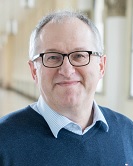
Erwin Frey
Faculty of Physics, Statistical and Biological Physics
Collective Effects in the Dynamics of Complex Biological Systems
(1) Regulatory mechanisms of protein patterns (2) Computational models of tissue dynamics (3) Stochastic dynamics of gene regulatory circuits (4) Dynamics of self-assembly processes
2022
A V Dass, S Wunnava, et al., F Gartner, S Angerpointner, E Frey, D Braun: RNA Oligomerisation without Added Catalyst from 2 ′ ,3 ′ ‑Cyclic Nucleotides by Drying at Air‑Water Interfaces; ChemSystemsChem e202200026 (2022)
View publicationF M Gartner, I R Graf and E Frey: The time complexity of self-assembly; PNAS, January 18, 2022, 119 (4) e2116373119
View publication2021
M C Wigbers, T H Tan, F Brauns, J Liu, S Z Swartz, E Frey & N Fakhri; Nature Physics (2021); A hierarchy of protein patterns robustly decodes cell shape information
View publicationB Ramm, A Goychuk, A Khmelinskaia, P Blumhardt, K. Ganzinger, E Frey, P Schwille; Nature Physics 17, 850–858 (2021); A diffusiophoretic mechanism for ATP-driven transport without motor proteins
View publicationA Kosloff, A W Holle, J Young, M A George, O Heifler, A Goychuk, E Frey, J P Spatz, F Patolsky, R Elnathan, N H Voelcker; Journal of Nanobiotechnology 19, 51 (2021); Optically Transparent Vertical Silicon Nanowire Arrays for Live-Cell Imaging
View publication2020
Gartner, F. M., Graf, I. R., Wilke, P., Geiger, P. M., & Frey, E. (2020), Stochastic yield catastrophes and robustness in self-assembly. ELife, 9, 1–37.
View publicationStriebel, M., Graf, I. R., & Frey, E. (2020). A mechanistic view of collective filament motion in active nematic networks. Biophysical Journal, 118(2), 313–324
View publicationGeßele R., Halatek J., Würthner L. and Frey E; Geometric cues stabilise long- axis polarisation of PAR protein patterns in C. elegans., Nat. Commun. 11(1): 539, 2020. doi: 10.1038/s41467-020-14317-w
View publicationM. C. Wigbers, F. Brauns, C. Y. Leung and E. Frey; Flow Induced Symmetry Breaking in a Conceptual Polarity Model, Cells 2020, 9(6), 1524;
View publicationD Rüdiger, K Kick, A Goychuk, A M Vollmar, E Frey, S Zahler; Cell Reports 32, 108015 (2020); Cell-Based Strain Remodeling of a Nonfibrous Matrix as an Organizing Principle for Vasculogenesis
View publicationF Zhou, S A Schaffer, Ch Schreiber, F J Segerer, A Goychuk, E Frey, J O Rädler; PLOS ONE 15, e0230679 (2020); Quasi-periodic migration of single cells on short microlanes
View publication2019
M. Kober, S. Bergeler, E. Frey, Can a flux-based mechanism explain positioning of protein clusters in three-dimensional cell geometry? Biophysical Journal 117 (3), 420-428 (2019).
View publicationF Thüroff, A Goychuk, M Reiter, E Frey; eLife 6, e46842 (2019); Bridging the gap between single cell migration and collective dynamics
View publicationA Goychuk & E Frey, Physical Review Letters 123, 178101 (2019); Protein recruitment through indirect mechanochemical interactions
View publication2018
Bergeler, S., and Frey, E. (2018). Regulation of Pom cluster dynamics in Myxococcus xanthus, PLoS Comput Biol 14 (8), e1006358 (2018).
View publicationDenk, J., Kretschmer, S., Halatek, J., Hartl, C., Schwille, P., and Frey, E. (2018). MinE conformational switching confers robustness on self-organized Min protein patterns. Proceedings of the National Academy of Sciences of the United States of America. DOI: 10.1073/pnas.1719801115
View publicationBojer, M., Graf, I.R., and Frey, E. (2018). Self-organized system size oscillation of a stochastic lattice-gas model.; Phys. Rev. E 98, 012410
View publication2017
Graf, I.R., and Frey, E. (2017). Generic transport mechanisms for molecular traffic in cellular protrusions. Phys Rev Lett 118, 128101.
View publicationBauer, M., Graf, I.R., Ngampruetikorn, V., Stephens, G.J., and Frey, E. (2017). Exploiting ecology in drug pulse sequences in favour of population reduction. Plos Comput Biol 13, e1005747.
View publicationSchumacher, D., Bergeler, S., Harms, A., Vonck, J., Huneke-Vogt, S., Frey, E., and Søgaard-Andersen, L. (2017). The PomXYZ Proteins Self-Organize on the Bacterial Nucleoid to Stimulate Cell Division. Developmental Cell 41, 299-314. e213.
View publication2016
Denk, J., Huber, L., Reithmann, E., and Frey, E. (2016). Active Curved Polymers Form Vortex Patterns on Membranes. Phys Rev Lett 116.
View publication Karl-Peter Hopfner
Karl-Peter Hopfner

Karl-Peter Hopfner
Dept. of Biochemistry, Gene Center
Structural Biology of DNA Repair
Structural studies and quantitative structure-function analysis of macromolecular complexes involved in genome and chromatin biology as well as innate immunity. In particular, we study the structure of multisubunit macromolecular machines by cryo-electron microscopy and X-ray crystallography. Structure function analysis is carried out using a variety of state of the art biochemical and molecular biology based approaches.
2022
M. M. Hohle, K. Lammens, F. Gut, B. Wang, S. Kahler, K. Kugler, M. Till, R. Beckmann, K.‑P. Hopfner, C. Jung: Ice thickness monitoring for cryo‑EM grids by interferometry imaging, Scientifc Reports | (2022) 12:15330
View publication2018
Schwarz, M., Schall, K., Kallis, E., Eustermann, S., Guariento, M., Moldt, M., Hopfner, K.P., and Michaelis, J. (2018). Single-molecule nucleosome remodeling by INO80 and effects of histone tails. FEBS letters.
View publicationEustermann, S., Schall, K., Kostrewa, D., Lakomek, K., Strauss, M., Moldt, M., and Hopfner, K.P. (2018). Structural basis for ATP-dependent chromatin remodelling by the INO80 complex. Nature.
View publicationKnoll KR, Eustermann S, Niebauer V, Oberbeckmann E, Stoehr G, Schall K, Tosi A, Schwarz M, Buchfellner A, Korber P, Hopfner KP; The nuclear actin-containing Arp8 module is a linker DNA sensor driving INO80 chromatin remodeling. Nat Struct Mol Biol. 2018 Sep;25(9):823-832. doi: 10.1038/s41594-018-0115-8. Epub 2018 Sep 3. PMID: 30177756.
View publication2017
Ponce, L.P., Fenn, N.C., Moritz, N., Krupka, C., Kozik, J.H., Lauber, K., Subklewe, M., and Hopfner, K.P. (2017). SIRPalpha-antibody fusion proteins stimulate phagocytosis and promote elimination of acute myeloid leukemia cells. Oncotarget 8, 11284-11301.
View publication2016
Chatzopoulou, E.I., Roskopf, C.C., Sekhavati, F., Braciak, T.A., Fenn, N.C., Hopfner, K.-P., Oduncu, F.S., Fey, G.H., and Rädler, J.O. (2016). Chip-based platform for dynamic analysis of NK cell cytolysis mediated by a triplebody. Analyst 141, 2284-2295.
View publicationSchiller, C.B., Braciak, T.A., Fenn, N.C., Seidel, U.J., Roskopf, C.C., Wildenhain, S., Honegger, A., Schubert, I.A., Schele, A., Lämmermann, K., et al. (2016). CD19-specific triplebody SPM-1 engages NK and γδ T cells for rapid and efficient lysis of malignant B-lymphoid cells. Oncotarget 7, 83392.
View publicationRoskopf, C.C., Braciak, T.A., Fenn, N.C., Kobold, S., Fey, G.H., Hopfner, K.-P., and Oduncu, F.S. (2016). Dual-targeting triplebody 33-3-19 mediates selective lysis of biphenotypic CD19+ CD33+ leukemia cells. Oncotarget 7, 22579.
View publication2014
Hopfner, K.P. (2014). RIG-I holds the CARDs in a game of self versus nonself. Molecular cell 55, 505-507.
View publicationHopfner, K.P. (2014). ATP puts the brake on DNA double‐strand break repair. Bioessays 36, 1170-1178.
View publication Veit Hornung
Veit Hornung
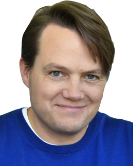
Veit Hornung
Dept. of Biochemistry, Gene Center, LMU Munich
Innate Immunity
In our research projects, we are trying to understand what mechanisms are employed by the innate immune system to distinguish self from non-self or harmless from dangerous, respectively.
Central to this complex task is a repertoire of pattern recognition receptors (PRRs) that have evolved to detect the presence of microorganisms. The ligands or targets of these PRRs are commonly referred to as microbe-associated molecular patterns (MAMPs). At the same time, some PRRs can also be triggered by endogenous substances that are formed or released during cell stress, perturbation of tissue homeostasis or metabolic imbalance. In analogy to the MAMP terminology, these signals are commonly referred to as damage associated molecular patterns (DAMPs).
Most of our research efforts focus on the interplay of the PRR system with its ligands. To this effect, (i) we are trying to decipher relevant MAMP or DAMP molecules during infection or sterile inflammation, (ii) we aim at the identification of novel PRRs, signaling cascades and their functional roles, and (iii) we develop strategies to manipulate this interface for therapeutic application.
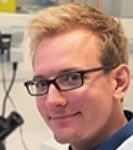 Lucas Jae
Lucas Jae
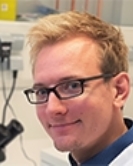
Lucas Jae
Dept. of Biochemistry, Gene Center
Knock-out Genetics; Genetic Interactions; Mitochondrial Fidelity
We use a combination of ultra-deep genome mutagenesis in haploid human cells and CRISPR/Cas genome editing to study the genetic basis of cellular processes important for human disease. The unbiased nature of this approach leads to stimulating encounters with very different aspects of cellular biology. This includes our investigation of the mysteries of mitochondrial fidelity.
 Kirsten Jung
Kirsten Jung

Kirsten Jung
Department of Microbiology, BMC
Microbiology
Our lab has a long-standing interest in stress response and transmembrane signal transduction in the enterobacterium Escherichia coli, the marine bacterium Vibrio harveyi, and the entomopathogen Photorhabdus luminescens. Our work is focused on the structural and functional analysis of membrane-integrated receptors and secondary transporters. Moreover, we aim to understand the regulatory network of bacterial cells by using combined experimental and systems biological approaches. Recently, we started to analyze stress dependent gene expression at single cell level within a population. We quantify cooperativity and individuality within bacterial populations in the context of metabolism-based chemical communication under various external conditions.
 Alena Khmelinskaia
Alena Khmelinskaia

Alena Khmelinskaia
Faculty of Chemistry and Pharmacy, LMU Munich
Protein Design and Self Assembly
Protein self-assembly is a ubiquitous phenomenon across all domains of life as well as viruses: protein building blocks are programmed to interact with one-another through supramolecular forces, adopting a wide variety of architectures ranging from unbounded crystals and filaments to bounded polyhedral assemblies.
The group of Protein Design and Self-Assembly focuses on dissecting the physical principles of protein self-assembly. While conceptually simple, the phenomenon of self-assembly entails a fine equilibrium of a number of physical properties, which determine the dynamics and structure of the assembly architecture.
Our group combines computational de novo protein design with protein production, in vitro model substrates and biophysical methods to systematically investigate the interplay between different types of interactions in the assembly process of protein-based materials.
The current first principle-based (Rosetta software suite) and AI-based methods, allows us to design rigid polyhedral protein assemblies with atomic-level accuracy that obey strict symmetry rules. We aim to expand the design process to dynamic and responsive protein assemblies, akin to natural assemblies, by exploring protein structural flexibility and by coupling assembly to biologically relevant processes, e.g. cargo encapsulation and membrane envelopment.
 Johanna Klughammer
Johanna Klughammer

Johanna Klughammer
Dept. of Biochemistry, Gene Center, LMU
Systems Immunology/Computational Genomics
In multicellular organisms it is essential that cells work together in concerted ways while fulfilling dedicated functions. We want to understand how and why cells do what they do in health and disease, with a special focus on the immune system which is involved in virtually all aspects of multicellular life.
Conveniently, a cell’s functionality is largely defined by its molecular setup in the form of DNA, RNA, and Protein – information bearing sequences that we can efficiently read using high-throughput methods. Measured in bulk, at single-cell resolution or spatially resolved, the resulting high-dimensional data allow us to characterize and model cellular types, states, programs, and interactions in diverse biomedical contexts ranging from host-pathogen interactions, over malignant diseases, to evolutionary questions. Our research is primarily data-driven while combining wet-lab and computational methods. To efficiently leverage large amounts of high-dimensional data, we use and develop computational approaches including data-processing and integration frameworks, machine learning, and visualizations in a high-performance computing environment.
 Simon Mages
Simon Mages

Simon Mages
Dept. of Biochemistry, Gene Center
Physics of High-Dimensional Biological Data
The stage for life is space: proteins fold into complex spatial structures, cells migrate or keep static neighborship relations, whole organisms move through or grow in their environment. But they also live in internal high-dimensional feature or state spaces, defined e.g. by molecular modifications, expression patterns, or pathological states. It is essential to systematically analyze the interrelations between position and internal spaces to approach a more fundamental understanding of life. Therefore, the research focus of our group lies on the joint analysis of the rich data about position and internal spaces from molecular to tissue scale, which can be generated with state-of-the-art experimental spatial omics methods. To this end we work at the intersection of bioinformatics, big data, high performance computing, and theoretical physics to design and implement efficient and scalable methods to extract quantitative and biologically meaningful insights from spatial omics data in a systematic way. To translate fundamental insights into advances in the understanding of pressing questions about specific biological systems, we collaborate with partners in basic and clinical research.
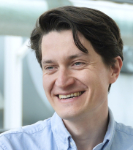 Lukas Milles
Lukas Milles

Lukas Milles
Max Planck Institute of Biochemistry and Gene Center Munich
Biomolecular Design
Our research group works at the intersection of de novo protein design, deep learning and fundamental biophysics of protein function. We aim to deconstruct biological function by reconstructing such function de novo. Using deep learning based protein design, we construct new-to-nature proteins that incorporate desired functions to better understand their biological mechanism. In particular we are interested to create synthetic autocatalytic enzymes that can covalently target selected epitopes and self-strengthening catch-bonds, both inspired by bacterial pathogen mechanisms. We rely on our recently developed technology for medium/high (96-192 designs/day) throughput (single-molecule) biophysical characterization. Thus, we can rapidly take proteins from an idea to a blueprint on the computer and finally to the wet lab, and back to study the differences between native and computationally designed protein sequences.
 Max Muenchhoff
Max Muenchhoff

Max Muenchhoff
Max von Pettenkofer Institute, Gene Center, LMU Munich
Host-Virus Interactions of Pandemic Pathogens
Our research work is devoted to understanding host-virus interactions of the two pandemic pathogens HIV-1 and SARS-CoV-2. Building on our platform for genomic surveillance of SARS-CoV-2 we are investigating its evolution in adaptation to the human immune system. We seek to elucidate immune escape mutations that are selected under antibody and T-cell responses in emerging variants and in hosts with prolonged infection. With a broad interest in the immunopathogenesis of viral infections we aim to decipher immunological signatures that are associated with differential disease phenotypes in clinical cohorts of SARS-CoV-2- and HIV-1-infected individuals. At the National Reference Center for Retroviruses we are developing state-of-the-art methods to quantify and characterize HIV persistence in patient samples and primary cell models.
 Joachim O. Rädler
Joachim O. Rädler
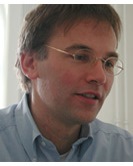
Joachim O. Rädler
Faculty of Physics, Soft Condensed Matter Group
Soft Matter Physics of Synthetic Gene Delivery and Transport Systems
The importance of bottle necks for the ecology/development of bacterial communities. Regulation of bacterial interaction strength via genetic modification. High throughput analysis of stochastic fluctuations.
2021
D B Brückner, N Arlt, A Fink, P Ronceray, J O Rädler, and C P Broedersz; PNAS February 16, 2021 118 (7) e2016602118; Learning the dynamics of cell–cell interactions in confined cell migration
2020
A Sandoval-Pérez, R M L Berger, A Garaizar, S E Farr, M A Brehm, G König, S W Schneider, R Collepardo-Guevara, V Huck, J O Rädler, C Aponte-Santamaría, DNA binds to a specific site of the adhesive blood-protein von Willebrand factor guided by electrostatic interactions, Nucleic Acids Research, gkaa466,
View publicationD. B. Brückner, A. Fink, J. O. Rädler, C. P. Broedersz: Disentangling the behavioural variability of confined cell migration, J. R. Soc. Interface (2020)
View publicationF Zhou, S A Schaffer, Ch Schreiber, F J Segerer, A Goychuk, E Frey, J O Rädler; PLOS ONE 15, e0230679 (2020); Quasi-periodic migration of single cells on short microlanes
View publication2019
Brückner, D., Fink, A., Schreiber, C., Röttgermann, P., Rädler, J., Broedersz, C.; Nature Physics (2019); Stochastic nonlinear dynamics of confined cell migration in two-state systems
View publicationReiser, A., Woschee, D., Mehrotra, N., Krzyston, R., Strey, H.H., Rädler, O. (2019). Correlation of mRNA delivery timing and protein expression in lipid-based transfection. bioRxiv. doi: https://doi.org/10.1101/607986
View publicationKrzysztoń R, Woschée D, Reiser A, Schwake G, Strey HH, Rädler JO. Single-cell kinetics of siRNA-mediated mRNA degradation. Nanomedicine: Nanotechnology, Biology and Medicine. 2019;21:102077.
View publicationR. Krzysztoń, D. Woschée, A. Reiser, G. Schwake, H. H. Strey, J. O. Rädler; nano, 21, October 2019, 102077; Single-cell kinetics of siRNA-mediated mRNA degradation
View publicationA. Fink, D. B. Brückner, C. Schreiber, P. J. F. Röttgermann, C. P. Broedersz and J. O. Rädler, Area and geometry dependence of cell migration in asymmetric two-state micropatterns, Biophys. J. (2019)
View publication2018
Reiser, A., Zorn, M.L., Murschhauser, A., and Rädler, J.O. (2018). Single Cell Microarrays Fabricated by Microscale Plasma-Initiated Protein Patterning (μPIPP). In Cell-Based Microarrays (Springer), pp. 41-54.
View publicationDietrich, M., Le Roy, H., Brückner, D.B., Engelke, H., Zantl, R., Rädler, J.O., and Broedersz, C.P. (2018). Guiding 3D cell migration in deformed synthetic hydrogel microstructures. Soft matter 14, 2816 -2826.
View publicationFroehlich, F., Reiser, A., Fink, L., Woschee, D., Ligon, T., Theis, F., Raedler, J., and Hasenauer, J. (2018). Multi-Experiment Nonlinear Mixed Effect Modeling of Single-Cell Translation Kinetics after Transfection. bioRxiv.
View publicationFröhlich, F., Reiser, A., Fink, L., Woschee, D., Ligon, T., Theis, F.J., Rädler, J.O., Hasenauer, J. (2018). Multi-experiment nonlinear mixed effect modeling of single-cell translation kinetics after transfection. npj Systems Biology and applications 4, Article number: 42
View publication2017
Krzyszton, R., Salem, B., Lee, D.J., Schwake, G., Wagner, E., Rädler, J.O. (2017). Microfluidic self-assembly of folate-targeted monomolecular siRNA-lipid nanoparticles. Nanoscale 9, 7442-7453.
View publication2016
Chatzopoulou, E.I., Roskopf, C.C., Sekhavati, F., Braciak, T.A., Fenn, N.C., Hopfner, K.-P., Oduncu, F.S., Fey, G.H., and Rädler, J.O. (2016). Chip-based platform for dynamic analysis of NK cell cytolysis mediated by a triplebody. Analyst 141, 2284-2295.
View publicationFröhlich, F., Theis, F.J., Rädler, J.O., and Hasenauer, J. (2016). Parameter estimation for dynamical systems with discrete events and logical operations. Bioinformatics.
View publication2015
Sekhavati, F., Endele, M., Rappl, S., Marel, A.-K., Schroeder, T., and Rädler, J.O. (2015). Marker-free detection of progenitor cell differentiation by analysis of Brownian motion in micro-wells. Integrative Biology 7, 178-183.
View publication Daniel Reichart
Daniel Reichart

Daniel Reichart
Gene Center and Department of Cardiology, Medical Faculty, LMU Munich
Translational Cardiovascular Medicine
The heart tissue is composed of multiple different cell types such as cardiomyocytes, fibroblasts or macrophages. This cellular diversity is necessary for normal heart contractility, relaxation and excitability. Single cell techniques extract cell type-specific information by measuring the transcriptome of each cardiac cell type, which helps to unravel the genetic readouts from healthy and diseased hearts. This technique enables the dissection of compositional changes and heterogeneity within each cell type and -state (=cell subtypes). ScRNA-seq using droplet-based microfluidic combines high-throughput, good sensitivity, and wide applicability. However due to their cell size of 100×25μm, adult CMs are not compatible with droplet-based microfluidics scRNA-seq techniques. As the average diameter of CM nuclei is 8-12μm, single nucleus RNA sequencing (snRNA-seq) of heart tissue provides a robust alternative to scRNA-seq and captures data from all cardiac lineages – even from frozen tissues.
 Petra Schwille
Petra Schwille
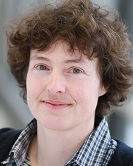
Petra Schwille
Max Planck Institute of Biochemistry
Cell and Membrane Biophysics
Our group is interested in reconstituting fundamental biological processes in cell-free environments, where they can be studied quantitatively with high-resolution biophysical methods. We are particularly interested in processes involving membrane transformations. In particular, we are aiming to establish a minimal machinery for protocell division.
2022
P Schwille & B Frohn (2022), Hidden protein functions and what they may teach us; Trends Cell Biol. 32(2):102-109.
View publicationB. Frohn, T. Härtel, J. Cox, P. Schwille (2022): Tracing back variations in archaeal ESCRT-based cell division to protein domain architectures. PLoS One 17(3).
View publication2021
B Ramm, A Goychuk, A Khmelinskaia, P Blumhardt, K. Ganzinger, E Frey, P Schwille; Nature Physics 17, 850–858 (2021); A diffusiophoretic mechanism for ATP-driven transport without motor proteins
View publication2020
Heermann T, Ramm B, Glaser S, Schwille P, Membrane-induced local self-enhancement of MinD membrane binding promotes Min protein pattern formation, J Mol Biol, 432(10):3191-3204
View publication2019
F. Stehr, J. Stein, F. Schueder, P. Schwille, R. Jungmann; Flat-top TIRF illumination boosts DNA-PAINT imaging and quantification, Nature Communications, (2019). 10: 1268
View publicationO. K. Wade, J. B. Woehrstein, P. C. Nickels, S. Strauss, F. Stehr, J. Stein, F. Schueder, M.T. Strauss, M. Ganji, J. Schnitzbauer, H. Grabmayr, P. Yin, P. Schwille, R. Jungmann; 124-color super-resolution imaging by engineering DNA-PAINT blinking kinetics; Nano Letters (2019). 19(4): 2641-2646
View publicationH. Eto, N. Soga, H. G. Franquelim, P. Glock, A. Khmelinskaia, L. Kai, M. Heymann, H. Noji and P. Schwille; Design of Sealable Custom-Shaped Cell Mimicries Based on Self- Assembled Monolayers on CYTOP Polymer, ACS Appl. Mater. Interfaces 2019, 11, 21372−21380
View publicationS. Kempter, A. Khmelinskaia, M. T. Strauss, P. Schwille, R. Jungmann, T. Liedl, W. Bae; Single Particle Tracking and Super-Resolution Imaging of Membrane-Assisted Stop-and-Go Diffusion and Lattice Assembly of DNA Origami; ACS Nano, 2019, 132, 996-1002
View publicationRamm B, Heermann T, Schwille P (2019) The E. coli MinCDE system in the regulation of protein patterns and gradients, Cell Mol Life Sci
View publicationGlock P, Ramm B, Heermann T, Kretschmer S, Schweizer J, Mücksch J, Alagöz G, Schwille P (2019) Stationary patterns in a two-protein reaction-diffusion system, ACS Synth Biol 8(1):148-157
View publicationJ Stein, F Stehr, P Schueler, P Blumhardt, F Schueder, J Mücksch, R Jungmann, P Schwille, Toward Absolute Molecular Numbers in DNA-PAINT, Nano Lett.2019, September 19, 2019,
F Schueder, J Stein, F Stehr, A Auer, B Sperl, M T. Strauss, P Schwille & R Jungmann, An order of magnitude faster DNA-PAINT imaging by optimized sequence design and buffer conditions, Nature Methods, Oct 7th
View publication2018
Franquelim, H.G., Khmelinskaia, A., Sobczak, J.P., Dietz, H., and Schwille, P. (2018). Membrane sculpting by curved DNA origami scaffolds. Nat Commun 9, 811.
View publicationDenk, J., Kretschmer, S., Halatek, J., Hartl, C., Schwille, P., and Frey, E. (2018). MinE conformational switching confers robustness on self-organized Min protein patterns. Proceedings of the National Academy of Sciences of the United States of America. DOI: 10.1073/pnas.1719801115
View publicationKretschmer, S., Harrington, L., and Schwille, P. (2018). Reverse and forward engineering of protein pattern formation. Philosophical Transactions of the Royal Society B: Biological Sciences 373.
View publicationRamm, B., Glock, P., Mücksch, J., Blumhardt, P., García-Soriano, D. A., Heymann, M., Schwille, P. (2018). The MinDE system is a generic spatial cue for membrane protein distribution in vitro. Nat Commun. doi: 10.1038/s41467-018-06310-1.
View publicationRamm, B., Glock, P., Schwille, P. (2018). In Vitro Reconstitution of Self-Organizing Protein Patterns on Supported Lipid Bilayers J. Vis. Exp. (137). e58139, doi:10.3791/58139
View publicationP. Blumhardt, J. Stein, J. Mücksch, F. Stehr, J. Bauer, R. Jungmann, P. Schwille; Photo-Induced Depletion of Binding Sites in DNA-PAINT Microscopy; Molecules (2018); 23(12): 3165
View publicationA. Khmelinskaia, J. Mücksch, E. P. Petrov, H. G. Franquelim. P. Schwille; Control of Membrane Binding and Diffusion of Cholesteryl-Modified DNA Origami Nanostructures by DNA Spacers; Langmuir, 2018, 34, 49, 14921-14931
View publicationA. Khmelinskaia, J. Mücksch, F. Conci, G. Chwastek, P. Schwille; FCS Analysis of Protein Mobility on Lipid Monolayers, Open Archive Published: March 28, 2018 DOI:https://doi.org/10.1016/j.bpj.2018.02.031
View publicationW. Ye, S. Celiksoy, A. Jakab, A. Khmelinskaia, T. Heermann, A. Raso, S. V. Wegner, G. Rivas, P. Schwille, R. Ahijado-Guzmán, C. Sönnichsen; Plasmonic Nanosensors Reveal a Height Dependence of MinDE Protein Oscillations on Membrane Features, J. Am. Chem. Soc.2018, 140, 51
View publicationLitschel T, Ramm B, Maas R, Heymann M, Schwille P (2018) Beating vesicles: Encapsulated protein oscillations cause dynamic membrane deformation, Angew Chemie Int Ed 57(50):16286–16290
View publication2017
Vogel, S.K., Greiss, F., Khmelinskaia, A., and Schwille, P. (2017). Control of lipid domain organization by a biomimetic contractile actomyosin cortex. eLife 6.
View publicationKretschmer, S., Zieske, K., and Schwille, P. (2017). Large-scale modulation of reconstituted Min protein patterns and gradients by defined mutations in MinE’s membrane targeting sequence. PloS one 12, e0179582.
View publicationMiyagi, A., Ramm, B., Schwille, P., and Scheuring, S. (2017). High-speed AFM reveals the inner workings of the MinDE protein oscillator. Nano letters.
View publication2016
Khmelinskaia, A., Franquelim, H.G., Petrov, E.P., and Schwille, P. (2016). Effect of anchor positioning on binding and diffusion of elongated 3D DNA nanostructures on lipid membranes. J Phys D Appl Phys 49.
View publicationKretschmer, S., and Schwille, P. (2016). Pattern formation on membranes and its role in bacterial cell division. Current opinion in cell biology 38, 52-59.
View publicationRamirez, D., Garcia-Soriano, D.A., Raso, A., Feingold, M., Rivas, G., and Schwille, P. (2016). Chiral vortex dynamics on membranes is an intrinsic property of FtsZ, driven by GTP hydrolysis. bioRxiv.
View publication2015
Kretschmer, S., and Schwille, P. (2015). Rekonstitution biologischer Selbstorganisation in vitro. BIOspektrum 21, 148-150.
View publication2014
Kretschmer, S., and Schwille, P. (2014). Toward Spatially Regulated Division of Protocells: Insights into the E. coli Min System from in Vitro Studies. Life 4, 915-928.
View publicationRamm B, Schwille P (2019) Crystal Ball: In vitro reconstitution of the bacterial cytoskeleton: Expected and unexpected new insights, Microb Biotechnol 12(1):74-76
View publication Johannes Stigler
Johannes Stigler
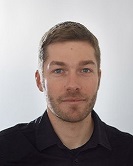
Johannes Stigler
Dept. of Biochemistry, Gene Center, LMU
Mechanics of Intrachromosomal Crosslinks; Establishment of Hierarchically Structured Chromosomes
Interphase chromosomes in higher eukaryotes are hierarchically structured on different levels, ranging from DNA wrapped around histones, to chromatin fibers, up to large chromosomal domains encompassing hundreds of kilobases. Hi-C experiments have shown that these topologically associating domains (TADs), which consist of regions of increased interactions of certain genomic regions, are a structural feature of all higher eukaryotes. TADs are generally isolated by domain boundaries from adjacent regions.
Current models claim that TADs are formed by the action of chromosomal architectural proteins, chiefly members of the SMC (structural maintenance of chromosomes) family, such as cohesin or condensin. With the help of genomic insulators, such as CTCF, SMC proteins act as intra-molecular crosslinkers and tether distant genomic sites together. The thus-established three-dimensional architecture of chromosomes is directly linked to gene regulation.
Our lab has set out to decipher the protein-protein and protein-DNA interactions of chromosomal architectural proteins that lead to the formation of three-dimensionally folded chromosomes.
 Julian Stingele
Julian Stingele

Julian Stingele
Dept. of Biochemistry, Gene Center, LMU
Cellular Biochemistry
DNA in every cell is damaged by tens of thousands of lesions every day. The challenge to maintain genome stability is further complicated by DNA lesions being very diverse in nature. Therefore, cells employ highly-specialized pathways, to detect, signal and repair different types of lesions.
The fundamental importance of genome maintenance is exemplified by germline mutations in DNA repair genes causing a range of human syndromes characterized by cancer predisposition, premature ageing, immunodeficiency and neurodegeneration. Moreover, somatic mutations of crucial DNA repair genes are responsible for the severe genome instability observed in cancer cells.
Importantly, this renders tumour cells sensitive to DNA damaging agents and to the inhibition of other repair factors, which can be exploited for targeted anti-cancer therapies. Nearly half of the current cancer treatment regimens involve treatment with agents inducing covalent DNA-protein crosslinks (including topotecan, doxorubicin, etoposide, carboplatin, oxaliplatin). DNA-protein crosslinks (DPCs) are highly toxic, because they are exceptionally large adducts, which block chromatin processes, such as transcription and replication.
Until recently, it was assumed that these lesions were targeted by canonical DNA repair pathways such as homologous recombination (HR) and nucleotide excision repair (NER). This has changed with our discovery of a protease-based DPC-specific repair mechanism, which is conserved from yeast to humans and is essential for genome stability and tumour suppression. Our work established that cells possess specialized proteases (termed DPC proteases: SPRTN in mammals, Wss1 in yeast) that degrade the protein component of DPCs, which enables replication of DPC-containing DNA.
2023
D Yaneva, J L Sparks, M Donsbach, S Zhao, P Weickert, R Bezalel-Buch, J Stingele, J C Walter: The FANCJ helicase unfolds DNA-protein crosslinks to promote their repair, Mol Cell, 2023 Jan 5;83(1):43-56.e10.
View publication Philip Tinnefeld
Philip Tinnefeld

Philip Tinnefeld
Faculty of Chemistry and Pharmacy, LMU Munich
Single-molecule detection and superresolution microscopy
With our background in single-molecule detection and superresolution microscopy, we develop new methods and molecular tools to study biomolecular processes, structures and dynamics. It is our ultimate vision to use fluorescence for recording movies of the molecular processes that are the basis of life.
With the progress of using DNA as a nanomaterial (DNA nanotechnology), we also got excited about building modular molecular devices with a variety of functions including molecular signal amplifiers, force sensors, and nanorulers. Such devices are the basis of a fundamental new approach to biosensing and molecular robotics.
Our NanoBioSciences group brings together unique interdisciplinarity creating synergy from molecular biology, physical chemistry, biophysics and nanophotonics.
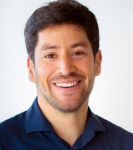 Rodrigo Villasenor Molina
Rodrigo Villasenor Molina

Rodrigo Villasenor Molina
Faculty of Medicine, Biomedical Center, LMU
Chromatin biology, synthetic biology, novel biological applications
Our DNA is packaged tightly into chromosomes and squeezed into a tiny nucleus. To achieve this, DNA is wrapped around unique proteins called histones, and the resulting DNA-protein complex is called chromatin. Histones are enzymatically modified with acetyl, methyl, or phosphate groups, for example. Today, we know many chemical modifications on chromatin, some of which are known to play essential roles in replication, transcription, chromatin compaction, and DNA–damage repair. A large number of these marks serve as interaction hubs for many nuclear proteins and provide critical structural features for protein recruitment. Hundreds of specialized proteins bind those modifications. These reader proteins and chemical modifications, in turn, influence the protein makeup of the chromatin of each cell type of our body. Importantly, the absence and wrong placement of many chromatin modifications are associated with numerous diseases. Therefore, understanding how the chemical code influences the organization and protein composition of chromatin has become a central focus of biomedical research. Our research is multifaceted and spans from chromatin biology to disease diagnostics. A major focus of the group is to identify which proteins interact with regulatory elements in the genome marked with specific chromatin modifications and shed light on novel gene regulatory mechanisms. Another more recent focus of the lab is to develop minimal-invasive methods for early cancer detection and tumor classification using epigenomic biomarkers in blood.
 Eckhard Wolf
Eckhard Wolf

Eckhard Wolf
Institute of Molecular Animal Breeding and Biotechnology, Gene Center
Biology of Reproduction
We study key steps of mammalian reproduction, such as oocyte maturation, fertilization, embryonic genome activation, loss of totipotency and early differentiation events, and the interaction between early embryos and their maternal environment. Both mouse and large animal models (cattle, pig) are used to unravel common and species-specific key events in normal and assisted reproduction. In addition, disturbances of reproduction due to metabolic problems, such as diabetes mellitus are studied. The analyses include holistic transcriptome studies by RNA-seq. Modeling and network analysis is done in collaboration with R. Zimmer.
2022
Stirm, M., L. Fonteyne, B. Shashikadze, J. Stöckl, M. Kurome, B. Keßler, V. Zakhartchenko, E. Kemter, H. Blum, G. J. Arnold, K. Matiasek, R. Wanke, W. Wurst, H. Nagashima, F. Knieling, M. Walter, C. Kupatt, T. Fröhlich, N. Klymiuk and E. Wolf (2022). „Pig models for Duchenne muscular dystrophy – from disease mechanisms to validation of new diagnostic and therapeutic concepts.“ Neuromuscular Disorders. DOI:https://doi.org/10.1016/j.nmd.2022.04.005
View publication2021
Flenkenthaler, F., E. Ländström, B. Shashikadze, M. Backman, A. Blutke, J. Philippou-Massier, S. Renner, M. Hrabe de Angelis, R. Wanke, H. Blum, G. J. Arnold, E. Wolf and T. Fröhlich (2021): Differential Effects of Insulin-Deficient Diabetes Mellitus on Visceral vs. Subcutaneous Adipose Tissue-Multi-omics Insights From the Munich MIDY Pig Model, Frontiers in medicine 8: 751277-751277.
View publicationShashikadze, B., F. Flenkenthaler, J. Stöckl, L. Valla, S. Renner, E. Kemter, E. Wolf and T. Fröhlich (2021): „Developmental Effects of (Pre-)Gestational Diabetes on Offspring: Systematic Screening Using Omics Approaches.“ Genes 12: 1991.
View publicationStirm, M., L. M. Fonteyne, B. Shashikadze, M. Lindner, M. Chirivi, A. Lange, C. Kaufhold, C. Mayer, I. Medugorac, B. Kessler, M. Kurome, V. Zakhartchenko, A. Hinrichs, E. Kemter, S. Krause, R. Wanke, G. J. Arnold, G. Wess, H. Nagashima, M. Hrabĕ de Angelis, F. Flenkenthaler, L. A. Kobelke, C. Bearzi, R. Rizzi, A. Bähr, S. Reese, K. Matiasek, M. C. Walter, C. Kupatt, S. Ziegler, P. Bartenstein, T. Fröhlich, N. Klymiuk, A. Blutke and E. Wolf (2021). „A scalable, clinically severe pig model for Duchenne muscular dystrophy.“ Disease Models & Mechanisms 14(12).
View publication2019
Renner S, Martins AS, Streckel E, Braun-Reichhart C, Backman M, Prehn C, Klymiuk N, Bähr A, Blutke A, Landbrecht-Schessl C, Wünsch A, Kessler B, Kurome M, Hinrichs A, Koopmans SJ, Krebs S, Kemter E, Rathkolb B, Nagashima H, Blum H, Ritzmann M, Wanke R, Aigner B, Adamski J, Hrabě de Angelis M, Wolf E; Mild maternal hyperglycemia in INS C93S transgenic pigs causes impaired glucose tolerance and metabolic alterations in neonatal offspring; Dis Model Mech.
View publication2018
Lavagi, I., Krebs, S., Simmet, K., Beck, A., Zakhartchenko, V., Wolf, E., and Blum, H. (2018). Single-cell RNA sequencing reveals developmental heterogeneity of blastomeres during major genome activation in bovine embryos. Sci Rep 8, 4071.
View publication2017
Blutke, A., Renner, S., Flenkenthaler, F., Backman, M., Haesner, S., Kemter, E., Landstrom, E., Braun-Reichhart, C., Albl, B., Streckel, E., et al. (2017). The Munich MIDY Pig Biobank – A unique resource for studying organ crosstalk in diabetes. Mol Metab 6, 931-940.
View publication2014
Graf, A., Krebs, S., Heininen-Brown, M., Zakhartchenko, V., Blum, H., and Wolf, E. (2014). Genome activation in bovine embryos: review of the literature and new insights from RNA sequencing experiments. Animal reproduction science 149, 46-58.
View publication
 Friedrich Simmel
Friedrich Simmel 